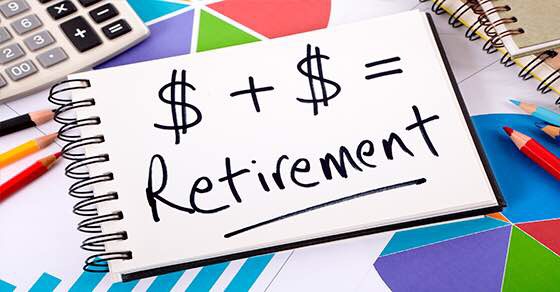Retirement Planning in the U.S.: 4 Different Stages of Life
Different people have different retirement needs, so there is no one-size-fits-all approach to retirement planning.

Different people have different retirement needs, so there is no one-size-fits-all approach to retirement planning. However, the strategies for retirement planning can vary greatly for the same person at different stages of life, and a person's retirement planning strategies in their 20s and 30s when they are in the prime of life are very different from the strategies they will have in their 50s and 60s when they are approaching retirement. The financial decisions we make at different stages of our lives will often affect the way we live and the quality of our lives in the future. Let's take a look at how to create an effective and accessible retirement plan for the four stages of life: young adults, middle age, near retirement, and post-retirement.
Young Adulthood (20s - 30s)
1. Plan ahead and set up an Emergency Fund: At this age, setting up an emergency fund should be your top priority. Use a cash account (CD, Money Market) to save 3-6 months' worth of living expenses in case of job loss or other unexpected financial constraints.
2. Save as much as possible for retirement: The most common mistake young people make is not saving for retirement early enough. They think that retirement is so far away that retirement planning can wait until the future. Many financial experts recommend that young people put a certain percentage of their salary into a retirement account, such as a 401(k) or IRA. if they save early, young people can take a bold approach to investing their money by putting more of it into stocks, because they have more time to make up for short-term losses and maximize their returns.
3. Avoid or minimize consumer debt: Excessive credit card or other consumer debt can have a negative financial impact on the future of retirement. The potential dangers of consumer debt include heavy interest rates, damaged credit, and financial inflexibility. In addition, every dollar spent on debt repayment is taken from funds that could have been invested, so the money spent on debt repayment is a lost investment opportunity.
4. Protect Your Assets: While accumulating assets is only one part of the effort, protecting your assets is also important. Consider using insurance, such as accidental disability and life insurance, as an asset protection strategy to provide income for your family in the event of an unexpected loss of income or untimely death.
5. Get your finances in order and make your wishes known: Ideally, people should get their wills and estate plans in place as early as possible. In the event that you are unable to express your will freely, or in the unfortunate event of your death, your will will be recognized and executed, and your heirs can avoid the costly and time-consuming court process of probate.
Middle Ages (40s - Early 50s)
1. Maximize your retirement savings: For most people, this is the period of highest income and best preparation for retirement, so you should take advantage of all the tools available to you to increase your retirement savings. A Qualified Retirement Account (QRA) can provide you with a double benefit: it allows the funds in your account to grow in a tax-deferred manner, and it may reduce your current income taxes (if you meet certain criteria).
2. Consider purchasing long-term care insurance: This type of insurance can help you reduce the cost of medical care in retirement. Everyone should consider whether this type of insurance is right for your needs. Some people may be better off paying for their own medical expenses, while others may be able to take advantage of Medicare or Medicaid. Purchasing long-term care insurance before the age of 60 often results in lower premiums. Also, it is easier to get approved when you are in better health and at a younger age. According to Employee Benefits According to the Research Institute, the average retired man over the age of 65 currently needs $27,707 in savings to meet his post-retirement health care expenses. Women will need $15,362, and long-term care will cost $73,000. At current count, 70% of those over 65 will need long-term care after retirement. In North America, there is now a person reaching age 65 every 8 seconds.
Mid 50s - Early 60s
1. make up for retirement plan shortfalls: under tax rules, people over age 50 can exceed the general limits and increase their contributions to IRAs and 401(k)s. The 401(k) contribution limit was raised to $18,000 in 2015, and you can add another $6,000 if you're 50 or older, up to a maximum of $24,000. the contribution limit to IRAs is $6,500. The contribution limit for people under age 50 is $5,500.
2. Research Social Security and Medicare income: At this point you should project your Social Security income in retirement and start thinking about how to allocate it. You should also consider how much income you will receive from Medicaid to pay for medical expenses and long-term care.
3. Start reallocating assets: At this stage, it is usually smart to start reallocating your retirement assets to reduce risk. As you approach retirement age, it is even more important to protect existing assets and reduce the risk of loss.
After Retirement (65 and Beyond)
1. Develop a budget: When your daily income is transferred from payroll to a retirement portfolio account (Retirement
When it comes to financial budgeting (Portfolios), it's important to set a financial budget and stick to it. If you are retired, you may be able to approximate your current expenses, but you also need to consider what your future expenses may be. The general rule of thumb is that you need about 70% of your pre-retirement expenses. However, many retirees tend to exceed this guideline in the early years of their retirement due to more travel, vacations, entertainment, or the purchase of a second home. It's also worth noting that health care expenses are usually lower in early retirement; they increase significantly as you age and your health declines.
2. Plan a Portfolio Distribution Strategy: A carefully planned distribution strategy can help you decide how to fund your retirement living expenses from your retirement portfolio. There are usually two distribution options: withdrawing a specific amount of money and withdrawing a specific percentage of the money. Withdrawing a specific amount is more predictable and easier to plan for; withdrawing a specific percentage, however, allows you to more easily manage and control the speed at which the funds in your account are distributed and withdrawn.
3. Consider Part-Time work: If you find that you can't make ends meet in retirement, consider Part-Time work. Even without financial considerations, many retirees take Part-Time or Volunteer jobs because it allows them to stay active and continue to contribute to their communities. Everyone wants to have a comfortable retirement and maintain a built-in standard of living. If you have worked hard and are actively preparing for retirement, your retirement can and should be the best time of your life.









